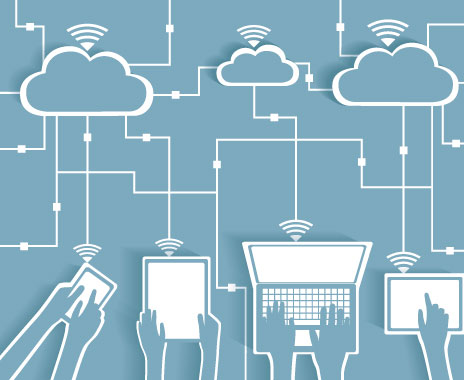You would be hard pressed to find a quick-service operator who, when asked why they started their own business, answered by saying it was to become the CIO of the company. Yet, with the myriad of disparate hardware and software systems that quick serves need to keep their businesses running, playing the role of CIO is often the reality.
Technology, and cloud computing in particular, has made sweeping changes to the way people live and work. It is rapidly transforming industries of all shapes and sizes, and the world of quick-service restaurants is no exception. So how can operators leverage all this new technology? Cloud-based POS systems offer many benefits; they remove the burden of having to update and maintain a traditional on-premises system, seamlessly take care of many back-end processes—from payments to inventory—and reduce costs in the long run. Utilizing the cloud is becoming the go-to move for quick-service operators looking to step away from the role of CIO and focus on what they are truly passionate about: food and service.
As with any new technology, there’s a learning curve, and the choices can seem overwhelming. Let’s clear up a few common myths and misconceptions about moving to a cloud-based POS.
Myth No. 1: My data will be less secure in the cloud
A common concern for quick-service operators thinking about migrating to a cloud-based POS is whether they can trust the cloud with their data. Many operators feel more secure knowing exactly where their physical server is located. With data breaches making news headlines weekly, it’s easy to see why there may be skepticism about relying on remote servers.
The truth is, no matter where your server is located, vulnerability for attacks and breaches will always exist. However, with the cloud, instead of operators bearing the burden of keeping their systems up-to-date or hiring a local IT technician to fix their system if a problem arises, they have the advantage of highly trained IT professionals who are guarding and maintaining their data around the clock. Additionally, in the event of an onsite disaster such as a fire or flood, an on-premises system stands the chance of losing everything if the servers are damaged. With the cloud’s servers hosted in remote locations with multiple backups, data is safer and easier to recover.
Myth No. 2: All of this new technology will be too expensive
Quick-serve operators pay large upfront costs for traditional on-premises systems with features that will likely become outdated in just a few years, if not sooner. Cloud-based POS and management systems reduce costs by utilizing a monthly subscription model with typically minimal to no upfront costs. The small monthly fees cover software, support, backups, and future upgrades, which save on technical support costs typically associated with an on-premises system. Furthermore, operators save money and time in the long run by not having to pay or wait on local IT support whenever an issue arises.
Myth No. 3: If I lose my internet connection, I lose my business
While this may have been a concern in the earlier days of cloud-based POS, many of today’s systems build intelligence directly into the hardware to keep the business running, even in the event of a network outage. For example, QuickBooks Point of Sale for Restaurants, powered by Revel Systems, is designed to continue to run, take payments, and track sales, even in the event of a lost internet connection.
Myth No. 4: The cloud doesn’t offer any benefits that my current system can’t provide
The cloud provides one huge benefit that a legacy POS system can’t compete with: integrated data. With a cloud-based system, quick-service operators can automatically sync sales, payments, inventory, CRM, and payroll data to their accounting software so they can always have an accurate, consolidated understanding of the money flowing in and out of their businesses—ultimately making it possible to run operations as leanly and efficiently as possible. Because of the open architecture designs of most cloud-based POS systems, restaurants are well-positioned to take advantage of the latest technology trends and integrate emerging products and solutions, such as guest-facing technology and reservation and pre-payment systems. Add full integration with popular mobile payment solutions, and you have quite a few compelling benefits that only the cloud can offer.
Just as businesses switched from running their own storage servers to the likes of Google Drive and Box and managing their own PBX phone systems to hosted systems such as RingCentral and Google Voice, so too will quick-service operators who want to stay ahead of the curve look to cloud-based POS solutions to simplify their lives.







